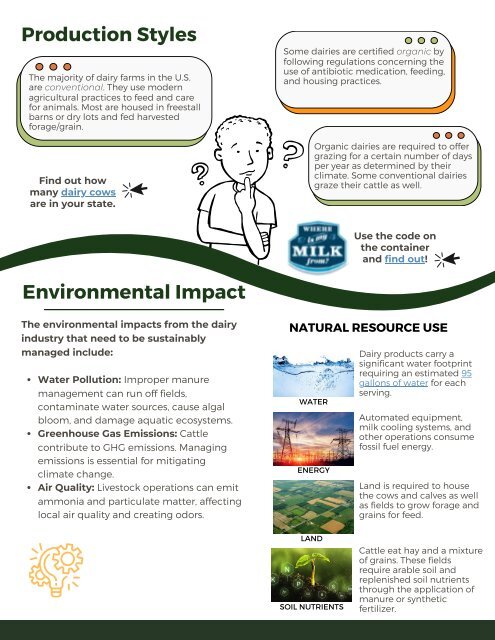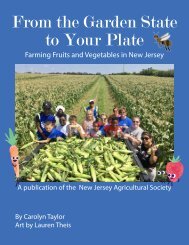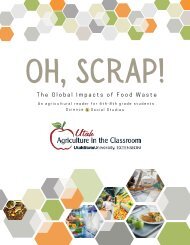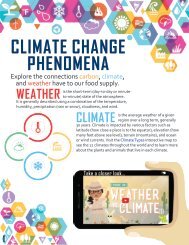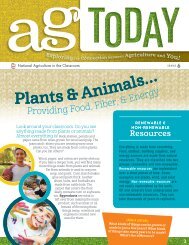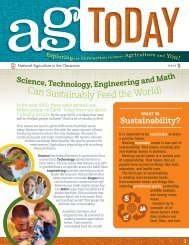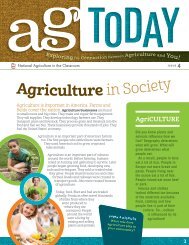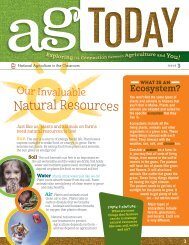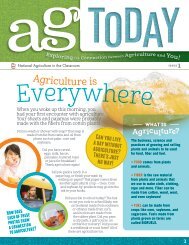Livestock Production
You also want an ePaper? Increase the reach of your titles
YUMPU automatically turns print PDFs into web optimized ePapers that Google loves.
<strong>Production</strong> Styles<br />
The majority of dairy farms in the U.S.<br />
are conventional. They use modern<br />
agricultural practices to feed and care<br />
for animals. Most are housed in freestall<br />
barns or dry lots and fed harvested<br />
forage/grain.<br />
Find out how<br />
many dairy cows<br />
are in your state.<br />
Some dairies are certified organic by<br />
following regulations concerning the<br />
use of antibiotic medication, feeding,<br />
and housing practices.<br />
Organic dairies are required to offer<br />
grazing for a certain number of days<br />
per year as determined by their<br />
climate. Some conventional dairies<br />
graze their cattle as well.<br />
Use the code on<br />
the container<br />
and find out!<br />
Environmental Impact<br />
The environmental impacts from the dairy<br />
industry that need to be sustainably<br />
managed include:<br />
Water Pollution: Improper manure<br />
management can run off fields,<br />
contaminate water sources, cause algal<br />
bloom, and damage aquatic ecosystems.<br />
Greenhouse Gas Emissions: Cattle<br />
contribute to GHG emissions. Managing<br />
emissions is essential for mitigating<br />
climate change.<br />
Air Quality: <strong>Livestock</strong> operations can emit<br />
ammonia and particulate matter, affecting<br />
local air quality and creating odors.<br />
NATURAL RESOURCE USE<br />
WATER<br />
ENERGY<br />
Dairy products carry a<br />
significant water footprint<br />
requiring an estimated 95<br />
gallons of water for each<br />
serving.<br />
Automated equipment,<br />
milk cooling systems, and<br />
other operations consume<br />
fossil fuel energy.<br />
Land is required to house<br />
the cows and calves as well<br />
as fields to grow forage and<br />
grains for feed.<br />
LAND<br />
SOIL NUTRIENTS<br />
Cattle eat hay and a mixture<br />
of grains. These fields<br />
require arable soil and<br />
replenished soil nutrients<br />
through the application of<br />
manure or synthetic<br />
fertilizer.


